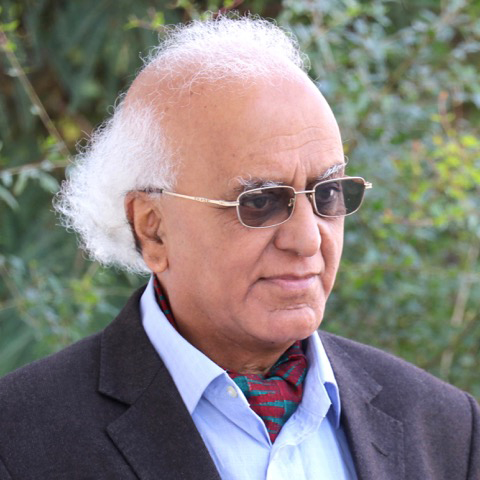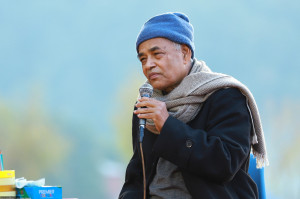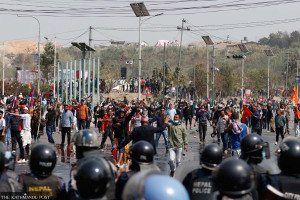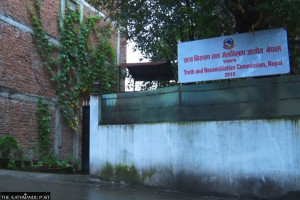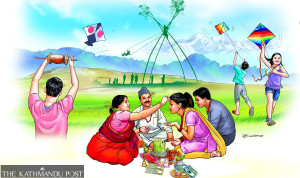Columns
Greta Rana's loud solitude
I want to briefly discuss the uniqueness of the journey of this quiet poet, fiction writer and theatre director.
Abhi Subedi
The spirit of the fictional and poetic oeuvre of the English Nepali writer Greta Rana was evoked the other day in Patan. I, too, had gone there to present my ideas at the session chaired by Bandana Rana. Greta had phoned me about it when I was interacting with the talented and creative students of Prativa educational institute at Nadipur Pokhara. That being my first exit from Nepal Mandala after two years of the pandemic, I was enjoying opening my mind only to inspiring moments. Greta Rana's invitation to speak at a review session on her fiction Hidden Women: The Ruling Women of the Rana Dynasty (2012, 2022) and her poetry book Castleford to Kathmandu (2021) at a location in Jawalakhel would definitely be one such inspiring occasion for me. But I suddenly realised that it would not be an unfamiliar event because I have spoken about her fiction and poetry on several previous occasions.
What is stunningly experimental and powerful is Greta Rana's own projection of herself in her works. Though she does not tell her story about the contexts that brought her into a Rana house in Nepal, she puts it through a description of the metamorphoses of characters who carry the memories of the times in the novels and creative experiments in poetry. The brilliant short film about Greta's poetic journey, directed by Chirag Bangdel and narrated by Saguna Shah, shows the poetic part.
I want to briefly discuss the uniqueness of the journey of this quiet poet, fiction writer and theatre director in the metropolis of Kathmandu, which is marked by several layers of architectonic times—from the exquisite Newar architectures, the Western neo-Baroque or Asian Baroque style buildings to the common city houses. Greta Rana saw the tumults of history turn silent and become still in the Rana buildings. In the epilogue of the second edition of what I call her magnum opus, Greta writes, "Over one-hundred-and-thirty years later, a young foreign woman stepped into the mysterious rest house in Jawalakhel." She found that the Rana houses, too, had memories. She saw in them the memories, the shadows, that "flitted in and out of the walls… she would see out of the corner of her eye shadowy figures walk along the passageway". Greta decided to articulate the "air of sorrow and abandonment" into fiction. The above work is the main result of that. Literary critics should write about the brilliant melange of imaginaire and history in her fictional works. This is a confessional statement here.
I consider Greta Rana an influential Nepali writer of English origin who has produced some seminal fictional works in which she has put herself in a unique manner. The novel Hidden Women offered me a silent challenge to revaluate Rana history from the perspective of the largely ignored characters, the womenfolk of the households of the ruling people in power, in this case, the Ranas and their lineage. This book is a history, well researched at that, told not from the evidence of the historiographical documents but from the perspective of the household women. One woman named Kadam, who comes from the Hinduised Magars of Gorkha, dominates the entire novel. The visceral narratives of the women of the Rana dynasty lure the readers into a world of the ruling families. Their human sides are depicted by using the women as the main characters.
The title of one chapter in the novel "1873: Jung Bahadur arrives" introduces the metafictional theme. The entire novel is woven around a theme about women. Greta uses double consciousness in this fictional story. She uses the fictional side of the story, but a critical interpretative consciousness dominates the historical motifs. Greta does not let the history of the household run without interpretation. The novel, it seems, is a conscious history written honestly from the point of view of the unobtrusive author. But we can see that the author introduces an element of personal feelings for the women. It seems Greta has caught the essence of history from the point of view of women and their problems related to joy and grim moments and living challenging lives. This is an entirely untold story about love, power, giving birth and pain experienced by women in the Rana buildings.
The novel prominently features Bal Narsingh Kunwar and his sons, who "disliked scholarship". The women's feelings and roles in the transfers of the Kunwars to Dhankuta, Dadeldhura and Jumla find subtle descriptions in the novel. These women who play different roles are Kadam, Ganesh Kumari and Hema, who form the female cohort of historical fiction. The men are in the background playing their roles in history. Greta's strength lies in her evocation of the largely ignored details of life. For example, she has not cited major events to predict the downfall of Bhimsen Thapa. She has instead chosen a vegetable seller's trust deficit for that. Major characters like Jung Bahadur Rana and the British envoy Brian Hodgson feature in the fiction though they do not easily merge in the fine fictional moments. The occasions of trials and travails suffered by these characters and their double binds are brilliantly depicted in fictional history. As this is not a review story, I only want to allude to the dexterity with which Greta Rana has given credence to what she calls the ruling women of the Rana dynasty. The essence of the story is that women in the family played significant roles not only in the household's daily life but also in giving shape to the mode of history.
The Jung wives' much bandied about tale at Pattharghatta is moving and stunning. Jung's wives were ready to commit Sati against his will. In a concerted voice, they tell Jung's brother Dhir Shumsher, "Your brother is dead, and we will go with him. We've discussed it among ourselves, and we've decided that it's our duty." Like any other historian, Greta has left this ellipsis without any interpretation or comment. But after reading this final chapter, I realised that Greta had presented the continuum of the woman Kadam who pervades the entire novel, as a force. I recall the centenarian woman in Garcia Marquez's novel One Hundred Years of Solitude whose continuity in the solitude despite the moments of tumults in history evokes a sense of time and human power. By presenting Kadam in a similar role, Greta Rana has projected an understanding of women's history who are invisible to both historians and social science scholars. Greta gives the women both real as well as symbolic roles in this novel about historical themes. Both the novel and poetry represent the metaphorical and symbolic journey of Greta Rana to Nepal.




 22.16°C Kathmandu
22.16°C Kathmandu

